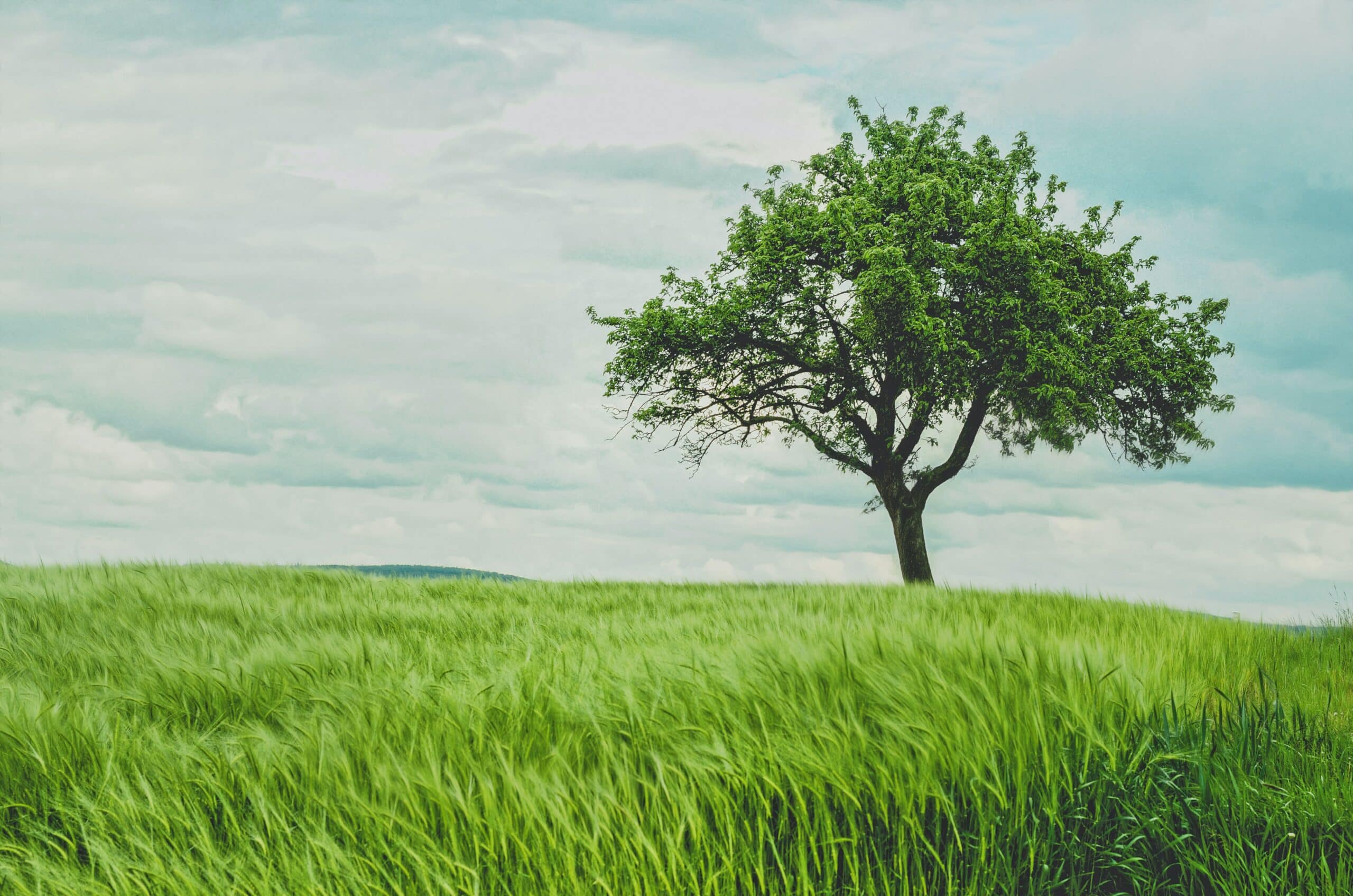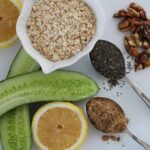The Meyer lemon tree is a delightful addition to any home garden or patio. Not only are Meyer lemons juicy, sweet and tart, but their bright yellow color adds a beautiful decorative element to any outdoor space. If you’re looking for an easy-care plant with plenty of rewards, you can’t go wrong with the Meyer lemon tree. Here’s our guide on how to care for and grow your own Meyer lemon tree in a pot.
The first step in growing your very own Meyer lemon tree is choosing the right pot. You’ll want to choose one that has enough drainage holes and is large enough to accommodate the root system of your new tree. The pot should also be made of material that won’t corrode or erode away over time due to exposure to the elements.
Finally, once you’ve chosen the right pot, it’s time to consider where you’ll place your new Meyer lemon tree. This is important because it will determine how much sun it receives each day—Meyer lemons need at least six hours of direct sunlight per day, so make sure you pick an area that gets plenty of sunshine. With these tips in mind, you’ll have no problem creating a successful potted Meyer lemon tree!
Choosing The Right Pot
Container gardening is like a dream come true, tangible evidence that you can indeed have your cake and eat it too. An irresistible chance to savor the sweet taste of success, without having to wait for weeks or months. When it comes to growing Meyer lemon trees in pots, choosing the right pot is essential for a fruitful harvest.
When selecting a pot for your Meyer lemon tree, consider its size and weight, as well as how much space you have available. A larger container will provide more room for the roots to spread out and develop. The pot should also be deep enough so that the root ball won’t reach the bottom within a few years of growth. Heavier pots are better since they won’t topple over easily, but make sure you can still move them for maintenance purposes.
Finally, the material used should be suitable for outdoor use and able to withstand all kinds of weather conditions such as freezing temperatures and scorching sunrays. Clay pots are great because they’re porous and help keep moisture in the soil while also allowing excess water to seep out. Plastic containers are also an option if they have drainage holes at their base, although they don’t offer as much insulation as clay pots and tend to heat up quickly in sunlight.
By selecting a pot with care, you’re already taking an important step towards ensuring that your Meyer lemon tree gets off on the right foot. Now it’s time to think about what kind of soil type and fertilization will best meet its needs…
Soil Type And Fertilization
Using the right soil for your Meyer lemon tree is essential for its health and growth. Like a well-oiled machine, proper soil will ensure the tree runs smoothly, providing it with all the nutrients it needs.
When selecting soil for your Meyer lemon tree, quality is key. A rich soil mix will provide the best environment for root growth and establishment. Look for a soil that contains organic matter such as compost or peat moss to help retain moisture and provide additional nutrients. Additionally, make sure to incorporate slow-release fertilizer into the mix to keep your tree fed throughout the year.
Finally, your Meyer lemon tree will need regular fertilization over its lifetime in order to stay healthy and productive. To do this, use an acidic fertilizer specifically formulated for citrus trees at least once every three months during growing season. With proper soil and fertilization practices in place, you’ll be well on your way to enjoying delicious home-grown lemons from your Meyer lemon tree! Now let’s move on to discussing sunlight requirements…
Sunlight Requirements
Let’s put on our gardening hats and prepare to bask in the sunlight with our Meyer lemon tree! Sunlight is essential for getting its juicy lemons, so it’s important to get this part right.
As with most things, more isn’t always better. It’s important to find a balance of ample sunlight while also avoiding too much intense heat. During the summer months, your Meyer lemon tree should be kept outdoors in a spot that gets at least 6 hours of full sun each day. In the wintertime, you can bring your tree indoors and place it near a sunny window. This will help ensure that your tree still gets enough light even when the days are shorter.
When it comes to placing your tree outdoors in the summer, keep an eye out for any potential hazards like nearby trees or buildings that could block the sun or create too much shade. If you’re growing multiple trees, make sure they’re spaced far enough apart so they all get enough light without competing for space. Following these simple rules will make sure that your Meyer lemon tree has everything it needs to thrive!
Now that we’ve taken care of the sun requirements for our Meyer lemon tree, let’s move onto watering and humidity considerations for optimal growth.
Watering And Humidity Considerations
Did you know that the amount of water a Meyer lemon tree needs each day can be as much as ten gallons? It’s true, and it underscores the importance of understanding watering and humidity needs when growing a Meyer lemon tree. Let’s take a look at how to keep your Meyer lemon tree healthy with the right amount of water and humidity.
First, during the growing season, which is spring and summer, water your Meyer lemon tree once or twice per week. Make sure you’re giving the soil around the tree enough time to dry out between watering. If you’re not sure if it needs more water, stick your finger into the soil near the trunk out far enough so you don’t damage any roots; if it feels dry an inch below the surface, then it’s time to water again.
In terms of humidity levels, aim for around 50% relative humidity. To keep those levels consistent in your home environment, consider using an indoor humidifier or misting the leaves of your Meyer lemon tree every few days with some purified or distilled water. Also make sure there is adequate air circulation around your tree by keeping away from any drafts that can dry out its leaves too quickly.
Finally, combine these important tips for watering and humidity with smart pruning practices to ensure that you have a robust and productive Meyer lemon tree throughout its growing season.
Pruning And Training
Pruning and training a Meyer lemon tree is like sculpting a work of art. It requires patience, skill and care to bring out the best in your tree. Proper pruning helps your tree grow healthy and strong, while improper pruning can stunt growth or even kill the tree.
Before you begin pruning, it is important to understand the basics of how a Meyer lemon tree grows. A Meyer lemon tree has two distinct growth phases – vegetative and reproductive. During the vegetative phase, new shoots, leaves, and branches are formed which provide the framework for fruiting later on. Pruning during this phase should focus on shaping the overall structure of the tree by removing weak or dead branches and thinning out overcrowded areas.
When your Meyer lemon tree enters its reproductive phase, pruning should focus more on encouraging fruit production. Remove any branches that don’t have any flower buds or fruits growing on them since these are not contributing to fruit production. Also remove any suckers or water sprouts that are competing with existing branches for nutrients and sunlight. Finally, thin out clusters of flowers or fruits so they do not compete against each other for resources.
TIP: When pruning your Meyer lemon tree it is important to keep an eye out for pests or disease which may be hiding beneath foliage or branches that you plan to remove. Removing infected parts of the plant before they spread will go a long way in keeping your Meyer Lemon Tree healthy!
Pollination And Fruiting
There’s something exciting about the prospect of growing a Meyer lemon tree. Watching it blossom and bear fruit can be immensely satisfying! But before you get to that point, there are several steps in the process – and one of them is pollination and fruiting. How can you ensure your tree grows properly?
The first step is to understand the process. Pollination occurs when pollen from a male flower is transferred to a female flower by bees or other pollinators. To make sure your tree receives enough pollen, plant at least two trees of different varieties close together in a pot. This will allow for adequate cross-pollination, which increases the chances of successful fruiting.
However, even if you have multiple trees in one pot, they may not bear fruit without help. If possible, hand-pollinate each flower with a small paintbrush or cotton swab; this helps guarantee that your flowers will become fruits on your tree! Once the flowers have been pollinated and fruits begin to form, make sure you give them plenty of TLC: water regularly and prune away any dead wood. With proper care, you should be able to enjoy delicious Meyer lemons from your own tree soon!
Controlling Pests And Diseases
No matter how hard you work to keep your Meyer lemon tree healthy, pests and diseases can still occur. But with the right preventative steps, you can keep them under control. In this section, we’ll look at identifying and treating common citrus pests and diseases.
First, it’s important to know what signs to look out for when checking for pests or diseases. You may notice yellowing or wilting of leaves, discoloration on the fruit, or tiny pinholes in the skin caused by insects. If you come across any of these signs, take a closer look to identify the source of the problem.
Once you determine what kind of pest or disease is present, there are several methods you can use to treat it safely and effectively. These include using insecticides or fungicides that are specifically designed for citrus plants and removing infected leaves from the tree. Additionally, horticultural oils can be used as a preventative measure to keep pests away from your tree.
By taking proactive steps now, you can protect your Meyer lemon tree from potential problems and ensure it continues to thrive in years to come. With that said, another important step for ensuring your tree’s health is protecting it during winter months.
Protecting Your Tree During Winter
Winter can be a challenging time for trees, no matter where they live. Similarly, protecting your Meyer lemon tree during this season is like providing a warm embrace to keep it safe and cozy. As the temperature drops, there are certain steps you should take to ensure that your Meyer lemon tree is well-protected from the cold weather.
First and foremost, you should make sure that your Meyer lemon tree has enough space around it so that cold air does not settle on its leaves and branches. If possible, move the container or pot indoors when temperatures drop below 25°F (−4°C). Additionally, if your Meyer lemon tree is planted in the ground, consider covering it with burlap or another material to protect the roots from frost.
Finally, water your Meyer lemon tree only when necessary during winter months as over-watering increases its vulnerability to disease and pests. Furthermore, removing dead or damaged branches will keep your tree healthy during winter and encourage new growth in springtime. With these simple steps in place, you can help guarantee that your Meyer lemon tree will stay safe throughout the coldest months of the year!
Propagation And Grafting Tips
Propagation and grafting are essential aspects of Meyer lemon tree care that can take your lemon-growing skills to the next level! Unlike other citrus fruits, growing Meyer lemons from seeds can be quite difficult. However, with careful propagation and grafting techniques you can guarantee a healthy, fruitful tree in no time.
By propagating or grafting a Meyer lemon tree, you’ll be able to enjoy the sweet, tart fruit for years to come. Not only does it provide trees with a larger root system for better stability and nutrition, it also helps them resist pests and diseases more effectively. Additionally, propagation and grafting are a great way to maintain the same variety of lemon – something that’s especially important when dealing with rarer fruit types like Meyer lemons.
Propagation and grafting may sound intimidating at first glance but it is actually a relatively simple process that anyone can do with some basic knowledge and patience. With proper techniques, you’ll be able to create clones of your existing trees that will grow into strong specimens capable of producing excellent quality fruit. Now all that’s left is to learn what to do with your harvested fruit!
What To Do With Your Harvested Fruit
Once you’ve taken care of your Meyer lemon tree and have it planted in the right spot, it’s time to think about what to do with all those tasty fruits! There are a few different ways to use them.
The first is to simply enjoy them fresh from the tree. Meyer lemons are great for snacking on, adding to salads, or squeezing for juice for recipes. You can also get creative and make other treats like jams, jellies, and marmalades.
For those looking for more long-term options, you can preserve your Meyer lemons by drying, pickling, or freezing them. Drying works best for slices of lemon while pickling requires cutting them into wedges and brining. If you freeze them, remember to slice or halve before doing so as whole lemons don’t thaw very well after being frozen. Here is a quick overview of these methods:
• Drying: t• Cut lemons into thin slices or wedges and arrange onto a parchment paper-lined baking tray in a single layer t• Place tray in an oven preheated to 250°F (121°C) until dry – usually around 2 hours • Pickling: t• Cut lemons into wedges and place in clean jars with vinegar and herbs or spices t• Seal the jar tightly and store in refrigerator where they will keep for several months • Freezing: t• Slice or halve the lemons before freezing as whole lemons don’t thaw very well after being frozen t• Place slices on a parchment paper-lined baking tray so they’re not touching each other then transfer to a freezer bag once frozen solid
Whatever method you choose, having some preserved Meyer lemon fruits means you can enjoy their unique flavor year round! From there you can move on to troubleshooting any common issues that may arise when growing your own citrus tree.
Troubleshooting Common Issues
The fragrant aroma of a meyer lemon tree is enough to make anyone’s heart flutter with anticipation. But even with the best care, growing a meyer lemon tree can be tricky and may require troubleshooting common issues. Let’s explore the ways to keep your meyer lemon tree healthy and happy.
When it comes to caring for your meyer lemon tree, there are certain issues that may come up which need immediate attention. Common problems include pests or diseases, improper watering, poor soil quality, and lack of sunlight. If you notice any of these symptoms, it’s important to take action quickly in order to prevent further damage or disease from spreading. You can also consult a gardening expert or read up on helpful tips online before attempting to fix the issue yourself.
Fortunately, there are some simple steps that you can take to ensure your meyer lemon tree stays healthy and productive. First and foremost, it’s important to provide proper drainage for the roots by adding compost or mulch around them. Additionally, regular pruning can help encourage more growth as well as keep pests away from the plant. Finally, providing adequate sunlight and water is essential for keeping your meyer lemon tree in optimal condition—which will allow it to produce delicious fruit year after year!
Now that we know how to troubleshoot common issues with a meyer lemon tree, let’s move on to learning how we can tell if our trees are healthy so we can enjoy their delectable fruits for years to come!
How To Tell If Your Meyer Lemon Tree Is Healthy
It’s estimated that around 50 million citrus trees are grown in containers in the US alone. With this in mind, it’s no surprise that we want to make sure our potted meyer lemon trees are healthy and flourishing. This article takes a look at how to tell if your meyer lemon tree is healthy, providing useful tips for growing these trees in containers.
It’s important to regularly check for signs of health, such as new leaves and flowers. The leaves should be glossy and green with no yellowing or brown spots. If there is yellowing, it could be a sign that your tree needs more water or nutrients from fertilizer. Additionally, you should ensure that the soil remains moist but not overly wet, as this can lead to root rot.
If there are fruit on the tree, make sure they’re plump and have a bright yellow-orange color when ripe. While inspecting the fruit, take note of any blemishes or discoloration – this could be an indication of disease or pests. It’s also important to keep an eye out for any signs of pests such as aphids or scale insects on both the leaves and fruit. Taking swift action against any pest infestations will help protect your meyer lemon tree, ensuring it stays healthy and productive for years to come.
With these tips in mind, you should be well-equipped to maintain a healthy meyer lemon tree in a container setting. Next up we’ll discuss some helpful strategies for getting the most out of your potted tree.
Tips For Growing Meyer Lemon Trees In Containers
If you’re looking for a way to bring the sweet flavor of lemons into your home, growing Meyer lemon trees in containers is an excellent option. Container gardening offers a unique opportunity to grow these citrus gems without needing a large garden space. With some tips and tricks, you can enjoy the delicious taste of Meyer lemons from your own backyard!
One important tip for growing Meyer lemon trees in containers is choosing the right pot. The pot needs to be big enough for the tree’s roots to spread out and have enough drainage holes on the bottom. Additionally, use a potting soil that has good drainage properties. This will help ensure that the tree doesn’t get root rot and keeps it healthy.
To care for your Meyer lemon tree, make sure it gets plenty of direct sunlight and water regularly. During winter months, water less often but still provide adequate irrigation. If you notice yellowing leaves or stunted growth, your tree may not be getting enough nutrients or light – take steps to remedy this as soon as possible. Lastly, prune your tree regularly to keep it looking its best and producing lots of juicy fruit!
Container gardening with Meyer lemon trees is a great way to enjoy fresh citrus fruits without needing a large garden space. With proper care and attention, you can grow healthy citrus trees that will reward you with delicious fruit year after year!
Container Gardening With Meyer Lemon Trees
When it comes to container gardening, the Meyer Lemon Tree is a great choice. Many gardeners believe that growing these trees in pots can be beneficial, but is there any truth to it? Let’s explore the benefits of this practice and how you can get started.
Growing Meyer Lemon Trees in Containers:
- Benefits:
- Increased Portability: Growing trees in containers makes them more portable than those planted directly into the ground. That means you can move them around your garden or patio for easy access and optimal sunlight exposure.
- Pest Control: The closed environment of a pot helps keep pests away from your tree, as well as any diseases they may carry.
- Improved Drainage: The contained environment makes it easier to control drainage and moisture levels, which helps promote better growth and health of your tree.
- Tips for Success:
- Use High Quality Soil: Make sure to use high quality soil when planting your Meyer Lemon Tree in a container so that it has the best chance at thriving.
- Provide Adequate Watering: Be sure to water your tree enough throughout its growing season so that its roots do not dry out or become waterlogged.
- Monitor Sunlight Exposure: Monitor the amount of sunlight your tree receives daily as too much can burn leaves while too little will cause stunted growth.
- How to Get Started:
- Choose Your Container: Pick a pot with drainage holes in the bottom and one that is at least 10 inches wide so that your tree has enough room for growth.
- Prepare Your Soil Mixture: To ensure healthy growth, create a soil mixture made up of equal parts compost, perlite, and peat moss with a handful of slow-release fertilizer mixed in.
- Plant & Care for Your Tree: Once you have planted your tree in the container using this soil mixture, make sure to provide adequate water, fertilizer during its growing season, prune off dead branches when necessary, and protect from cold weather if needed.
These are just some of the advantages that come with choosing to grow a Meyer Lemon Tree in a container instead of planting one directly into the ground. Doing so gives you more control over its environment while also making it easier to transport should you need or want to move it around various areas on your property. With this information in hand, all there’s left is deciding which type of container will work best for you!
Benefits Of Growing Meyer Lemon Trees
Growing Meyer Lemon trees offers a unique opportunity to bring a bit of sunshine into your home. With their sweet-tart flavor and fragrant blossoms, these beloved citrus fruits are a delight to cultivate and enjoy. From adding zest to recipes to bringing a burst of color in the garden, here’s why you should consider growing Meyer Lemon trees.
Meyer Lemons are easier to care for than other citrus varieties, making them ideal for container gardening. They require less pruning and fewer treatments with fertilizer or pesticide than other citrus types, so it’s well within the grasp of novice gardeners! Plus, because Meyer Lemons are smaller than other lemons, they require less space when grown in containers.
Not only can you enjoy harvesting your own fruits at home, but you can also benefit from their beauty! The Meyer Lemon tree produces beautiful white flowers that will fill your yard with a delicate scent and brighten up any home. It’s an excellent addition to any landscape as well since its glossy green leaves provide an attractive backdrop all year round. So if you’re looking for an easy-to-care-for plant that adds both flavor and beauty to your garden, consider planting a Meyer Lemon tree!
Frequently Asked Questions
How Can I Tell If My Meyer Lemon Tree Is Getting Enough Sunlight?
It’s not always easy to tell if your Meyer lemon tree is getting enough sunlight. With the right amount of sun, you’ll be rewarded with an abundance of juicy lemons. So, how can you make sure your Meyer lemon tree is getting enough sun?
First, it’s important to note that Meyer lemon trees need at least 8-10 hours of direct sunlight per day. If you’re not able to provide this much sun indoors, consider installing a grow light or moving the tree outdoors. Make sure to rotate the pot occasionally so that all sides receive equal amounts of sunlight.
You can also tell if your Meyer lemon tree is getting enough sunlight by looking for signs of growth and development such as new leaves, flowers and eventually fruit. A healthy Meyer lemon tree should have bright green foliage and a sturdy upright shape with branches coming out evenly from the center trunk. If your tree is not showing these signs, then it may not be receiving enough sunlight.
To ensure that your Meyer lemon tree receives the best care possible, follow watering guidelines and prune any dead or diseased branches regularly. Also consider fertilizing once every six months or so. By following these tips and providing adequate sunlight for your Meyer lemon tree, you’ll soon have a plentiful harvest of sweet and tangy fruits!
What Is The Best Soil Mixture For A Meyer Lemon Tree In A Container?
When it comes to growing a Meyer lemon tree in a container, the right soil mixture is key. It can be intimidating to pick the best soil for your citrus tree, but with some guidance and research, you can find the perfect blend that will give your Meyer lemon tree the nutrients it needs to thrive.
First and foremost, you should know that citrus trees need well-draining soil. This means using a potting mix with organic matter like compost or peat moss. You also want to add some perlite or sand for additional drainage and aeration. To provide the Meyer lemon tree with all the necessary nutrients, you should mix in a slow-release fertilizer as well.
So what does this look like when all combined? Here’s a list of five items that make up an ideal potting soil mixture for your Meyer lemon tree: • Compost • Peat moss • Perlite or sand • Slow-release fertilizer • Potting mix
Making sure your Meyer lemon tree has enough sunlight is important too, but having the right soil mixture will ensure it receives all of its essential minerals and nutrients to grow strong and healthy. Take care to combine these elements in order to create an environment where your Meyer lemon tree can flourish!
How Often Should I Water My Meyer Lemon Tree?
Watering your Meyer lemon tree is essential to ensure it stays healthy and produces ample amounts of fruit. Did you know that lemon trees need an average of 10 gallons of water a week? It’s true! With this in mind, here are some tips to consider when watering your Meyer lemon tree:
• Water deeply and slowly. This encourages the tree’s roots to grow further into the soil, making them stronger and better able to absorb nutrients. • Check the soil moisture level at least once a week. The soil should be damp but not wet. If it feels dry, it’s time to water. • Water only in the morning or evening when temperatures are cool. Avoid watering during midday when temperatures are high as this can cause leaf burn due to evaporation of the water droplets on leaves in direct sunlight. • Mulch around the tree with organic material like straw, compost or bark chips to help retain moisture and reduce weeds.
Here’s a helpful tip: Place your finger into the soil near the root zone of the tree up to your knuckle and if it feels dry then it is time for watering. This will also allow you to get more familiar with how often your Meyer lemon tree needs water depending on its environment (e.g., if you live in a hot or dry climate).
Properly caring for your Meyer lemon tree starts with knowing how much water it needs each week – but don’t forget about providing nutrients, pruning off dead branches, and protecting from pests as well! Taking these steps will give you a healthy Meyer lemon tree that bears plenty of delicious fruits for years to come!
What Is The Best Way To Fertilize My Meyer Lemon Tree?
Fertilizing your Meyer lemon tree is essential for its growth and health. With the right fertilizer and application techniques, you can ensure that your tree gets the nutrients it needs to thrive. Imagery of a lush, green Meyer lemon tree laden with juicy lemons inspires us to provide our own trees with the same care.
When fertilizing your Meyer lemon tree, it’s important to use a balanced fertilizer with nitrogen, phosphorus, and potassium. You should also consider adding micronutrients like iron, zinc, and magnesium to enhance the soil’s nutrient content. Additionally, applying organic matter such as compost or manure can help improve soil structure and increase its moisture-holding capacity.
For best results when fertilizing your Meyer lemon tree, apply a slow-release fertilizer at least once per year in early spring or late fall. This will give your tree a steady supply of nutrients throughout the growing season without any need for additional applications. It’s also important to make sure that you are not overfertilizing as this can damage roots and even kill your tree if done too frequently or in excess amounts. With proper care and regular fertilization your Meyer lemon tree will be healthy, vibrant, and full of delicious fruit!
How Do I Protect My Meyer Lemon Tree During A Cold Winter?
Protecting your Meyer lemon tree during a cold winter might seem like a daunting challenge, but with the right information and tools, it doesn’t have to be. You may think that you need to move your tree indoors for the winter season, but that isn’t always necessary. Here are some tips and tricks to help you keep your Meyer lemon tree safe from frost and other cold weather dangers:
First off, there are several proactive steps you can take in order to prepare your Meyer lemon tree for cold weather. Mulching is an effective way to insulate the root zone of your tree and help protect it from extreme temperatures. Additionally, using a windbreak around the base of your tree can also be very beneficial for blocking strong winds that may damage branches or leaves. Finally, pruning back overly vigorous growth can help reduce water loss during periods of severe cold which will improve the health of your Meyer lemon tree over time.
It is important to remember that if temperatures drop below freezing, it is important to take further action in order to protect your Meyer lemon tree. Here are four key points to consider as part of this process:
• Move potted plants indoors or cover them with a thick blanket or frost cover • Water trees evenly throughout the winter months • Monitor temperature closely during extreme weather events • Prune dead branches and damaged foliage as soon as possible
By taking these simple steps, you can ensure that your Meyer lemon tree has the best chance of surviving any cold winters without any significant damage. With proper care and protection all year round, you can look forward to enjoying healthy harvests from your citrus fruits for many years to come!
Conclusion
The Meyer lemon tree is a delightful addition to any garden or patio, but it requires some extra care and attention to ensure its health and longevity. It’s important to provide adequate sunlight, water, soil mixture, fertilization and protection during the cold winter months – all of which can be managed with just a few simple steps. With proper care and maintenance, your Meyer lemon tree can provide you with delicious fruit for years to come.
By taking the time to understand your tree’s needs, you can help it thrive in its new home. Start by making sure it gets enough sunlight; find out what kind of soil mixture is best for your container; water regularly but not too much; fertilize appropriately; and protect it from extreme temperatures during the winter season. All these efforts will pay off when you’re enjoying the sweet citrusy flavor of your very own Meyer lemons!
So don’t be intimidated by caring for your Meyer lemon tree – just follow these tips and you’ll be on your way to a successful harvest in no time at all! With a little bit of love and dedication, you can have fresh lemons right from your own backyard!





























